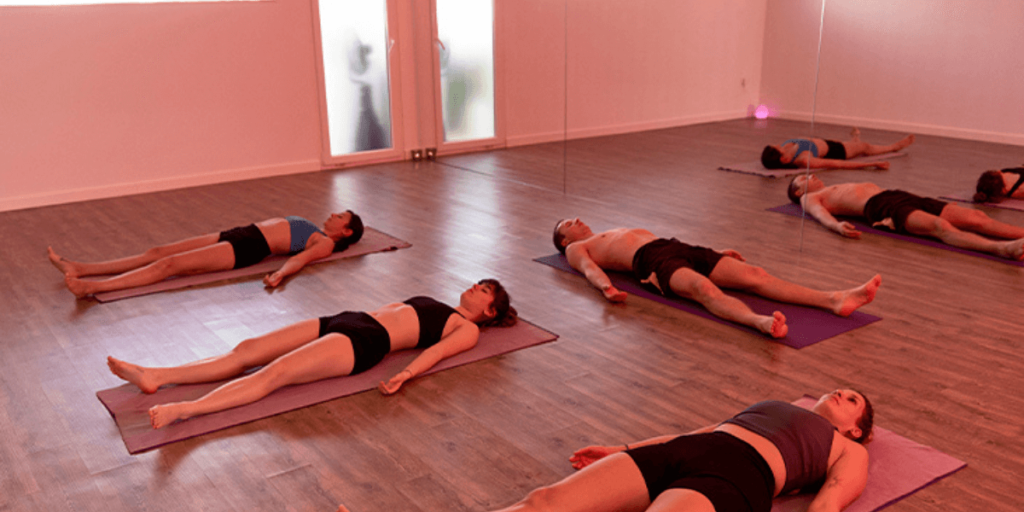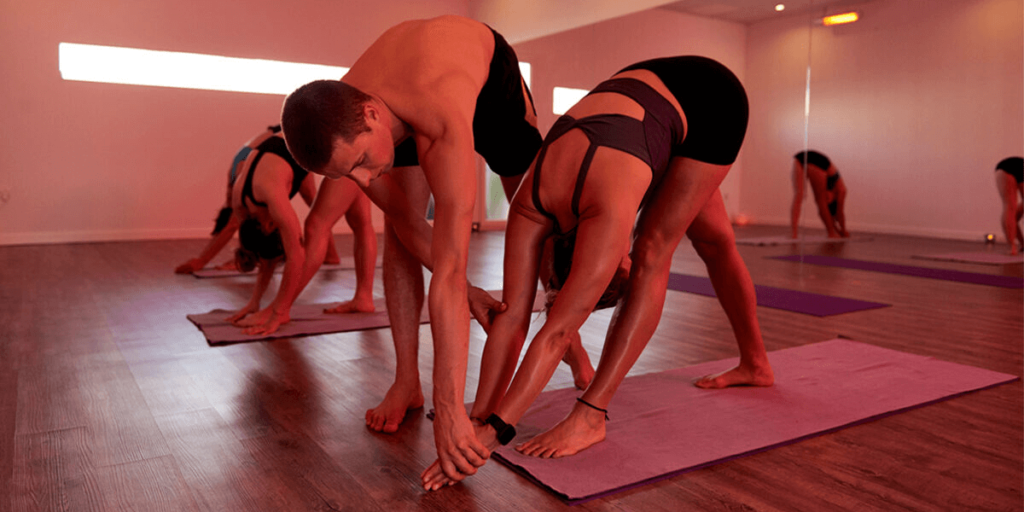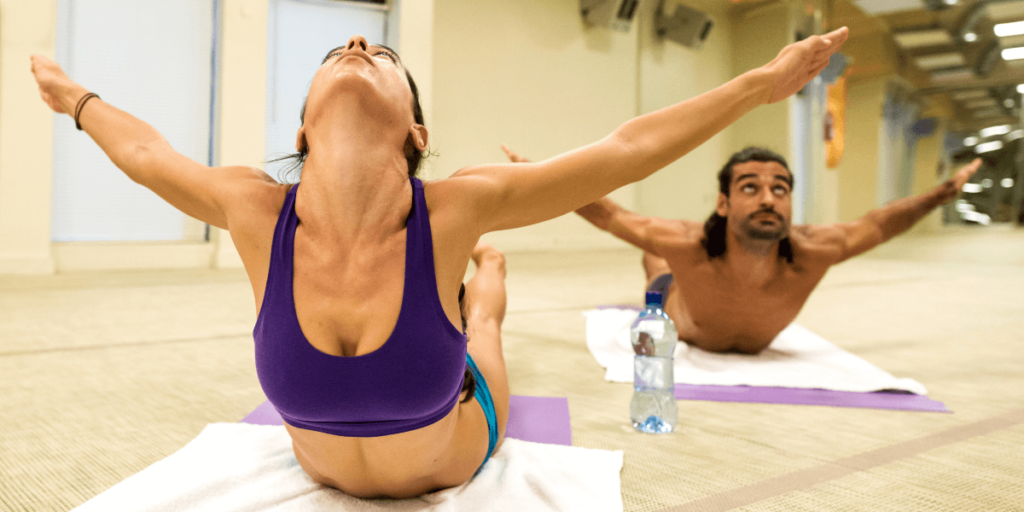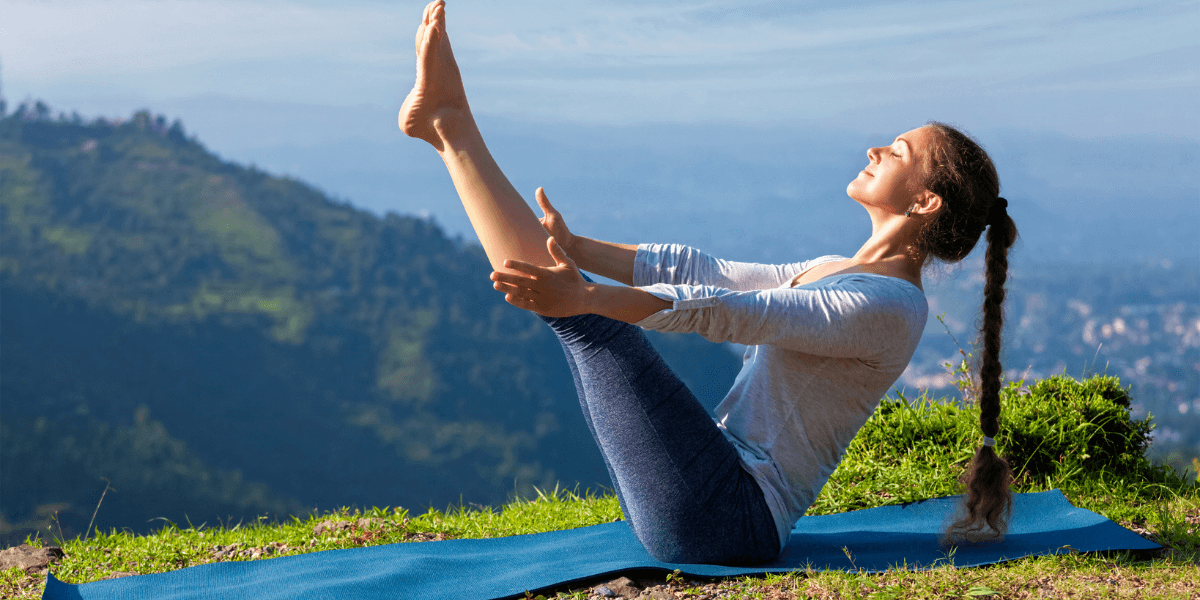Hot yoga, practiced in a room heated to a higher-than-average temperature, usually between 80°F to 105°F, may seem like a passing fad or trend, but the scientific facts behind this heated practice prove that the extra degrees are well worth it! Sweating is undeniably good for us, and when paired with yoga, it can help to heal and dial up the intensity, it helps us increase exercise and burn more calories, all while cleansing our bodies. While yoga itself can increase strength, reduce stress, and improve flexibility – these benefits can be heightened with heat.
Still on the fence about trying hot yoga or adding this practice to your workout regime? Here are ten reasons to practice hot yoga today.

Reasons to Practice Hot Yoga
While hot yoga can help you to exercise and move your body, the mental benefits can help to improve your overall wellbeing. Here are a few of the top reasons to practice hot yoga regularly.
1. It helps to alleviate stress
According to a 2018 study, a 16-week hot yoga program dramatically lowered stress levels and improved mindfulness of depressed, physically inactive adults.
2. It is beneficial to the cardiovascular system
A 2014 study found that only one session of hot yoga would get the heart beating at the same pace as a brisk walk (3.5 miles per hour).
The elevated heart rate of hot yoga participants, which can possibly be caused by both the heated room and the yoga postures, may contribute to the cardiovascular benefits typically associated with aerobic exercise.

3. It’s a great way to get rid of toxins
Sweating more helps improve our elimination process through the skin and lightens our toxic load. During practice, the body rids itself of contaminants such as arsenic, cadmium, lead, mercury, and other chemicals through sweat.
4. Increases bone density
As you support your weight in a yoga pose, you’re helping to develop bone density. Since bone density decreases with age, this is particularly important for older adults and premenopausal women, and can help with the onset of osteoporosis.
5. Burns more calories
Traditional yoga will burn about 183 calories per hour for a 160-pound individual. Increasing the temperature will help you burn more calories.
Indeed, hot yoga will burn more calories than a traditional yoga workout. One study found that women on average burned 333 calories during a 90-minute, slow-moving hot yoga class.

6. Improves Flexibility
Heat increases metabolic rate and helps you to stretch further because it warms you up. Applying heat to the knee for 20 minutes or more will increase its flexibility and reduce the amount of force required from the muscles to flex it by a whopping 25%.
As an effect, a hot yoga studio atmosphere can make yoga postures easier and more effective since you can stretch a little further and achieve a wider range of motion. Thanks to the heat, you’ll be able to do more and will be more flexible, lowering the risk of injury.
7. It’s good for your blood sugar levels
While any form of exercise can help you burn calories and lower glucose (sugar) levels in your bloodstream, hot yoga can be particularly beneficial for individuals who are more at risk of type 2 diabetes.
A 2013 study showed that hot yoga practice boosted glucose tolerance (the speed at which the body removes glucose from the blood) in older adults who were at risk for metabolic health problems, but had less of an impact on younger, lean participants.
8. It aids in better sleep
In a study of 13 healthy men and women practitioners who took part in hot yoga twice weekly, results showed that, on practice days, the participants had an easier time falling back asleep after nocturnal awakenings than on the days they did not practice hot yoga.

9. Gives your skin a glow-up
One of the key goals of hot yoga is for you to sweat a lot.
Sweating in a hot environment has the added advantage of improving circulation, which brings oxygen- and nutrient-rich blood to skin cells. As a result, your skin can benefit from internal nourishment.
10. Keep the blues at bay
Yoga is highly recognized for its calming and mood-boosting properties. The good news is that it can also aid in the treatment of depression. Yoga was found to be a successful way to relieve depressive symptoms in a 2017 review of 23 different studies.
Of course, depression isn’t a one-size-fits-all situation: what works for one person may not work for you. Yoga isn’t a miracle solution for perfect mental wellbeing and serenity, but it might help you feel better.
Yoga Poses Practiced in Hot Yoga
A traditional hot yoga sequence typically consists of 26 yoga asanas with two breathing exercises. A class is often called a “26 & 2” sequence. Below is a list of the yoga poses to expect in a hot yoga class.
- Pranayama (Deep Breathing)
- Ardha Chandrasana (Half Moon Pose)
- Utkatasana (Awkward Pose)
- Garudasana (Eagle Pose)
- Dandayamana-Janushirasana (Standing Head To Knee Pose)
- Dandayamana-Dhanurasana (Standing Bow Pose)
- Tuladandasana (Balancing Stick Pose)
- Dandayamana-Bibhaktapada-Paschimotthanasana (Standing Separate Leg Stretching Pose)
- Trikonasana (Triangle Pose)
- Dandayamana-Bibhaktapada-Janushirasana (Standing Separate Head To Knee Pose)
- Vrikshasana (Tree Pose)
- Padangustasana (Toe Stand Pose)
- Savasana (Dead Body Pose)
- Pavanamuktasana (Wind-Relieving Pose)
- Padahastasana (Sit Up Pose)
- Bhujangasana (Cobra Pose)
- Salabhasana (Locust Pose)
- Poorna Salabhasana (Full Locust Pose)
- Dhanurasana (Bow Pose)
- Supta Vajrasana (Fixed Firm Pose)
- Ardha Kurmasana (Half Tortoise)
- Ustrasana (Camel Pose)
- Sasankasana (Rabbit Pose)
- Janushirasana-Paschimottanasana (Sitting Head To Knee Stretching Pose)
- Ardha Matsyendrasana (Spine Twisting Pose)
- Kapalbhati Pranayama (Skull Shining Breathing Technique)
How to Start Your Hot Yoga Journey
For those that are new to hot yoga, here are some suggestions: Choose a class that is no more than an hour-long, don’t eat for at least a couple of hours before class, drink plenty of water before and after class, and never push yourself too much — if you start to feel woozy or uncomfortable, sit down and leave the session as soon as you feel stable.
If you love the practice, and want to learn to teach 26 & 2 in a heated room for yourself, visit the Original Hot Yoga Academy and register for the live, online 26 x 2 Hot Yoga Education. Here, you will learn to teach a hot yoga class from master trainers, Ida Ripley and Aaron Thomas.




